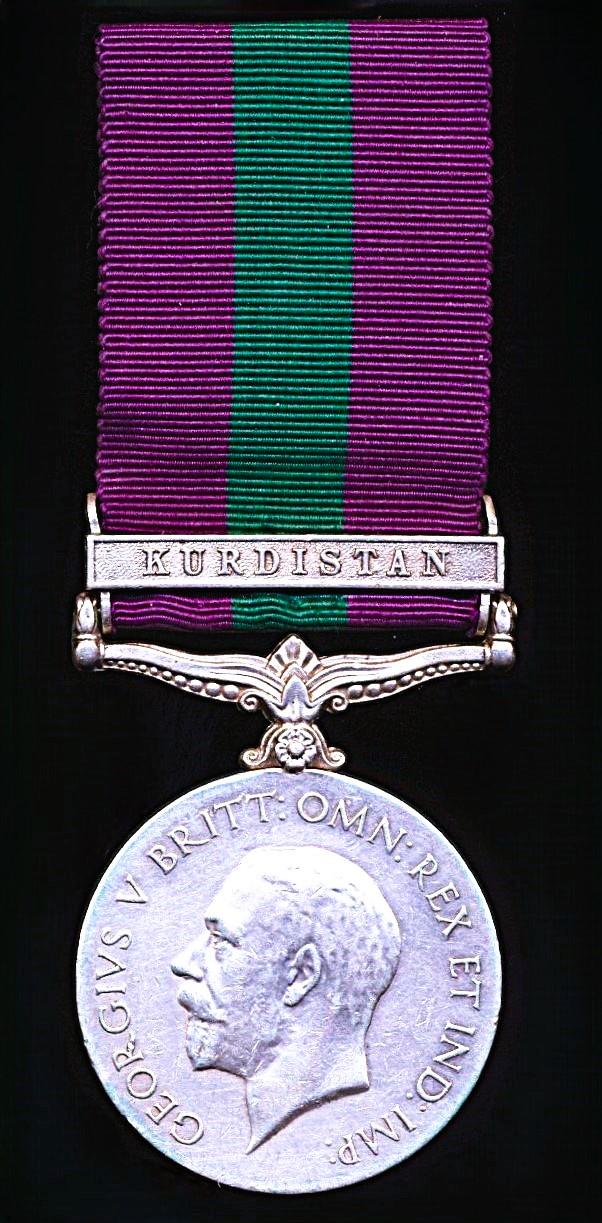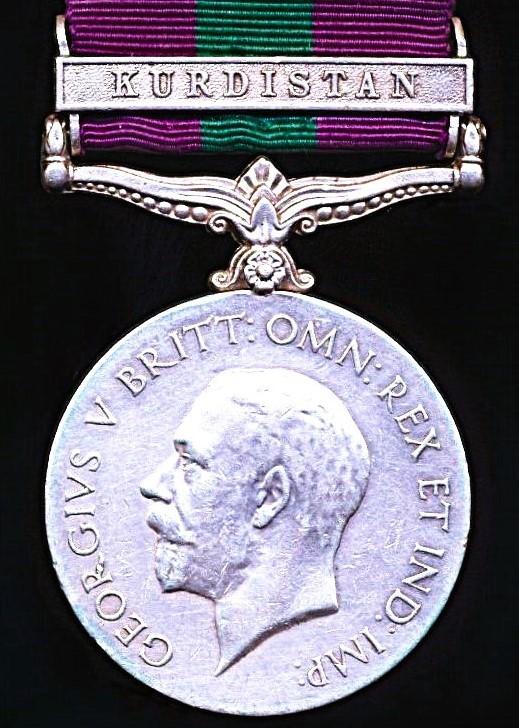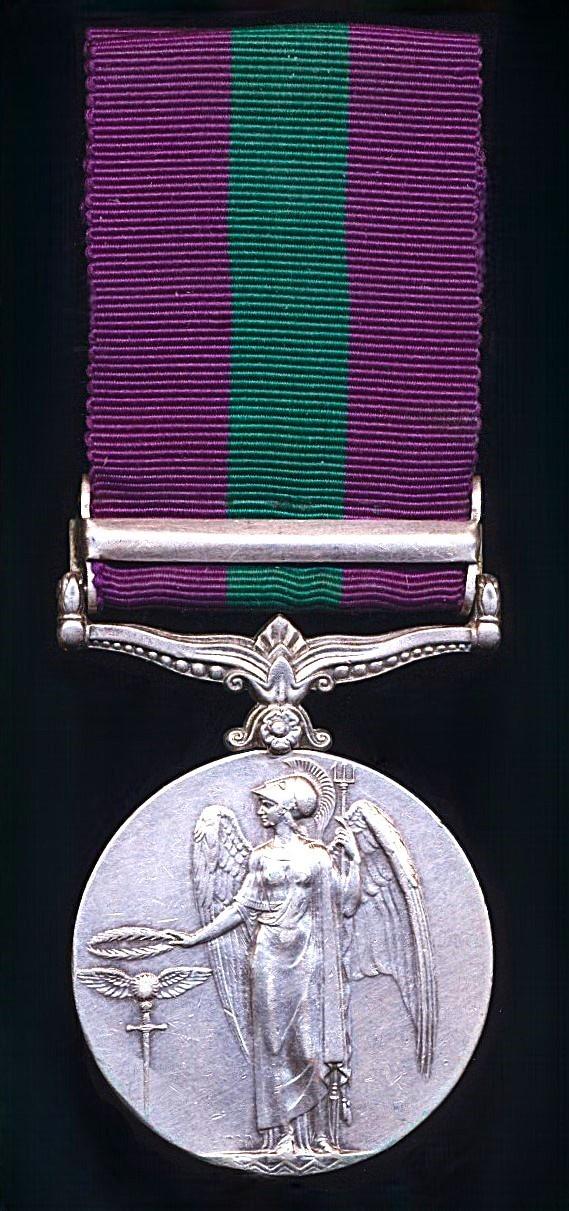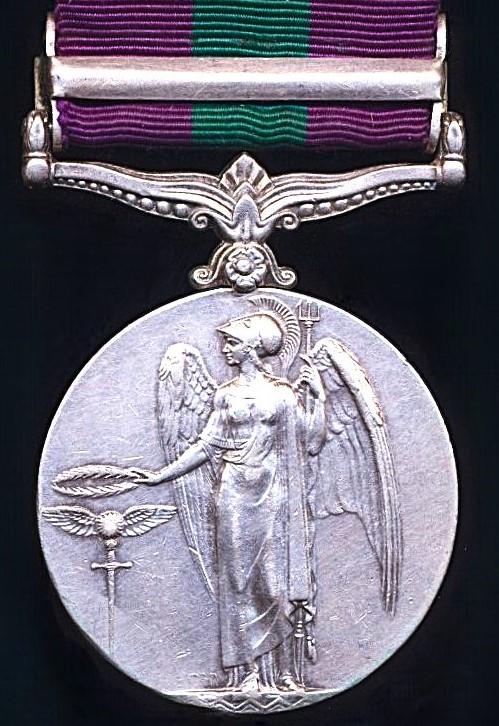General Service 1918. GV First issue with clasp 'Kurdistan' (28 Hvldr. Kapur Singh. 1-11-Sikh R.)
The recipient was an Indian soldier of the Sikh faith, who was a non-commissioned-officer, holding the rank of 'Havildar' (Sergeant) while serving with the 1st Battalion (King George's Own) (Ferozepore Sikhs) 11th Sikh Regiment of the British Indian Army
Medal & Clasp Verification: Havildar Kapur Singh is confirmed entitled to the medal and clasp for his deployment and qualifying service in Kurdistan during the '1923 Revolt', per the respective medal roll referenced below
- GSM 1918-62. With clasps 'Kurdistan': WO 100/G41/451) compiled and signed at Mhow, Central Provinces, India, 20 March 1925. At the time of the medal roll being signed, Kapur Singh was still a serving member of 1/11 Sikh Regiment
The recipients low two-digit number, No. 28 is his 'new' regimental number issued to him, when his former unit, 14th King George's Own Ferozepore Sikhs - the most senior Sikh infantry regiment of the pre-1914 British Indian Army - was re-styled as the 1st Battalion (King George's Own) (Ferozepore Sikhs) 11th Sikh Regiment in 1922
1/11 Sikhs had the distinction of becoming the first infantry regiment in the British Empire to have been transported by air-lift deployment during the Kurdistan Rebellion of 1923, when 2 x companies of 1/11 Sikh, together with their equipment were flown from the railhead to Kirkuk - a journey that took less then 1 hour, which otherwise would have taken a march overland of 1 week
Condition: VF
Code: 24905
105.00 GBP







